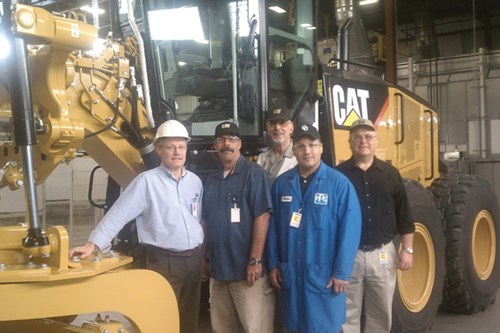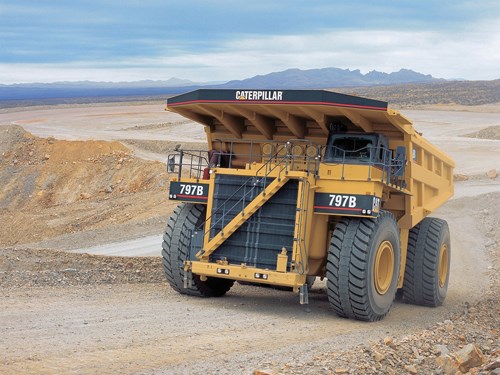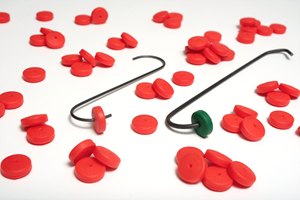PPG Industries is shining up its renewed commitment to the heavy-duty equipment coatings market.
In 2011, it got a huge push when Caterpillar selected the company’s industrial coatings business as the sole heavy-duty equipment coatings supplier for a new motor grader assembly plant in North Little Rock, Ark. In addition to serving as Cat’s single-source coatings supplier, PPG also is providing on-site technical and product approval support, and in-plant training of paint-line operators through its Knowledge College service in coating application technologies.
John Valasco, PPG global account manager, says he believes this project will reward PPG’s renewed commitment to heavy-duty equipment (HDE) coatings. Case in point: the company recently earned recognition as a partner-level supplier in the John Deere Achieving Excellence Program, Deere’s highest supplier rating.
“We’re not there just to sell a gallon of paint or a box of powder,” Valasco says. “We’re working with customers such as Caterpillar to demonstrate our capabilities as a total finishing solutions provider.”
Liquid and Powder Push
Electrocoat has long been PPG’s main breadwinner in the heavy-duty equipment coatings category, showcasing its efficiency and environmental compliance, low cost per square foot, corrosion protection and UV durability.
But PPG is also pushing more of its liquid and powder coating in the industrial coatings sector, saying it offers superior color and appearance technology for HDE. The company’s Spectracron line of coatings includes primers and topcoats in a variety of formulas such as alkyds, urethanes, epoxies and acrylics. The water-based Aquacron line also features primers and topcoats. In the powder coating segment, PPG’s Envirocron powder coatings are available in primers or topcoats. PPG also says it is the only global coatings supplier that offers a complete line of pretreatment products such as iron, zinc and ambient-temperature phosphates.
PPG customers are sitting up and taking notice of the HDE products.
Good Color Match
Grasan, a Mansfield, Ohio-based manufacturer of conveying, crushing and screening equipment for coal, aggregates and construction industries, says coatings performance is a must since its mobile and stationary equipment is subjected to constant battering from rubble and debris, not to mention the punishing effects of the weather.
When the company began to experience quality and delivery problems with another paint supplier, Scott Eilenfeld, Grasan plant manager, decided to switch to PPG TrueFinish coatings. He says the average turnaround time on orders is only about a week—a big improvement over the previous supplier. He also appreciates the color-match accuracy he gets with TrueFinish.
“I shoot about 20 or 30 different shades of gray, and the color match is always good,” Eilenfeld says. “I just turn over the paint chips that my customers give me.”
Eilenfeld also is impressed with the ultraviolet protection provided by PPG’s Spectracron 390-UV, a high-solids, industrial polyurethane that he specified on a recent job in Florida for a 600-ton, electrically powered, portable pit crusher—one of the largest in the nation.
“The sun is really hard on the paint in that part of the country,” Eilenfeld says.
Need for Durability
Thurston Manufacturing in Nebraska has supplied Blu-Jet tillage and fertilizer equipment to the farm industry for the last 40 years and holds the patent on the original Circle R side dump trailer sold primarily in the heavy-duty construction market.
As Thurston’s product offering and customer base expanded, so did its needs. Not only did the company need to increase production, but it also wanted to offer a higher-quality finish—two goals normally thought to be contradictory to each other and that typically required a compromise to be made, trading off some of one for the other.
Ryan Jensen, Thurston’s chief operating officer, said the company had been using a direct-to-metal polyurethane which provided the high-gloss finish it was after and helped speed production, since a primer was not used.
“But we also wanted to increase the durability of the coating and increase the value this process added for our customers,” he says.
Thurston began searching for alternate coating systems, first trying a rust-inhibitive epoxy primer that would enhance the corrosion protection. But this created a bottleneck in the paint booth as operators now had to allow time for the primer to dry before topcoating.
Jensen said the company wanted to provide a wet coating that would not add the additional cost of an oven and baking process to its costing and pricing, yet would still provide a high-quality finish that would go toe-to-toe with or outperform powder coating in the field. This prompted further searching for other high-end type options.
Jensen spoke with a PPG representative, admitting that Thurston had “asked for the world and didn’t want to make any trade-offs.”
After several trials, PPG suggested Spectracron 581/582, a wet-on-wet 2K epoxy primer, along with its PerformaLoc polyaspartic coating, which promised to meet all of Thurston’s requirements: adhesion, UV stability, corrosion protection, chemical resistance and fast air-dry times.
2K Polyurethane
Spectracron can be topcoated in as little as 10 min with a two-component polyurethane or polyaspartic without fear of hazing or delamination, a benefit unique to this system.
Because the PerformaLoc topcoat has a very short pot life, PPG recommended a proportioning machine that would handle precisely measured components and blend them together for spraying. PerformaLoc dries to touch in 10-30 min, and can be taped and handled in 45 min. No-force dry time in an oven dramatically increased throughput and saved in energy costs.
Jensen says his company was pleased with the results but still had PPG run a series of side-by-side lab tests pitting a competing polyester powder against the proposed liquid system. Comparing salt spray, humidity and QUV, the liquid epoxy primer/polyaspartic topcoat system prevailed.
When it came to the proportioning equipment, Jensen says PPG “worked side by side with the equipment suppliers and the painters, and spent a lot of time to make sure it was right. They made sure mixing ratios were right and the system doubled capacity and we didn’t have to handle parts twice.”
Optimizing Agricultural Finishes: Ashley Industrial Molding runs it for John Deere, Case
Ashley Industrial Molding (AIM) of Ashley, Ind., is a prominent supplier to the agriculture industry, molding and coating sheet molding composites and dicyclopentadiene parts—particularly large body panels requiring Class A finishes—that go directly from the box to its customers’ vehicles.
Parts manufactured for John Deere include panels for combines that are molded on a 3,000-ton large platen press and a DCPD/SMC combination back-hoe hood.
AIM has earned John Deere Supplier of the Year awards in the past and also provides topcoated panels for Case that are shipped ready for direct placement onto the equipment maker’s assembly line.
AIM’s 132,000-sq-ft plant is equipped with 400 3,000-ton compression and reaction injection molding presses, a water jet trimming system, and robotic systems for adhesive dispensing and additional part trimming applications.
The company’s advanced paint line is capable of handling panels as large as 10 × 6 × 3 ft and producing a high-quality finish that meets the demanding performance specifications of top-tier customers.
AIM uses a low-VOC, two-component polyurethane system provided by the Sherwin-Williams Co. This coating system is applied on a conveyorized paint line complete with power wash, forced-air dry-off and a paint bake oven.
According to AIM Vice President of Operations Scott Pflughoeft, the single-pass prime-topcoat system keeps paint costs low while meeting rigorous requirements for gloss and aesthetic appeal.
“Achieving the finish quality we consistently provide on large parts can be a challenge,” Pflughoeft says. “But we’ve got our line working well.”
In addition to supplying the coatings, Sherwin-Williams has provided design engineering, technical support and other services to help AIM minimize rejects due to dirt, redesign its paint kitchen for greater efficiency, and train first- and second-shift painters, both in the classroom and on the paint line.









.jpg;maxWidth=300;quality=90)












